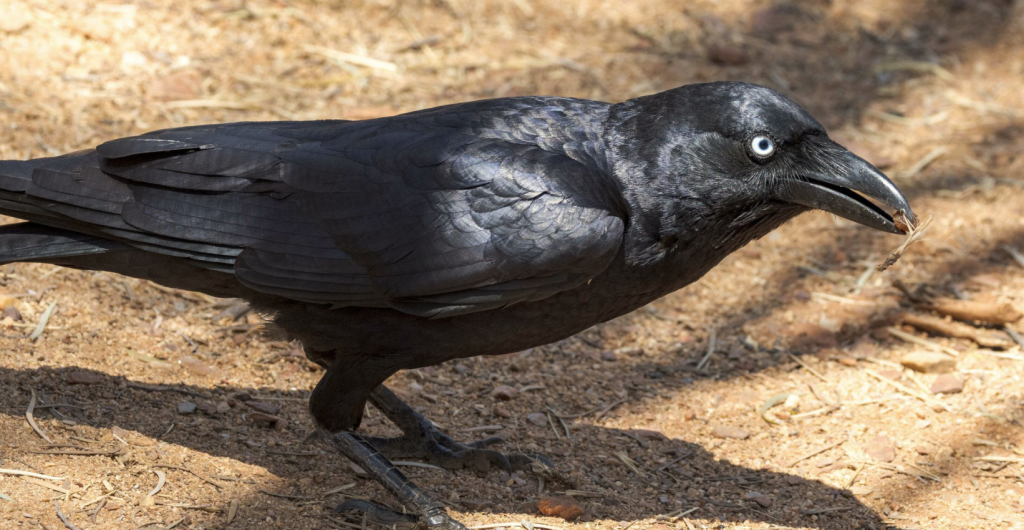And now, as John Cleese might say, for something completely different. A book review. Books about science aimed at a general audience can have profound effects. They might enlighten us concerning something we’ve wondered about (‘DNA, The Secret of Life’), or tell how a famous scientist lived and worked (‘Why Do You Care What Other People Think, Dr. Feynman?’). Or, they may change the way we see the world. In that category, for me, is a book by the Dutch ethologist Frans de Waal, with the axe-handle title, “Are We Smart Enough to Know How Smart Animals Are?”. I wasn’t, but that book smartened me up. And if you don’t know what an ethologist is, don’t feel bad. Most of us had to look it up.
An ethologist studies the behavior of animals. The rock star primatologist Jane Goodall is an ethologist, although she is usually identified as a primatologist. She, and a growing cadre of scientists, have overturned the conventional thinking about animal behavior. Before Goodall and the other ethologists began their work, it was textbook that animals could be conditioned to certain behavior, but that they lacked the elements of intelligence. They lacked ‘cognition’, which is the ability to use the input of the senses to develop knowledge of the environment and to apply this knowledge. Intelligence contains a number of types of traits, including the ability to solve problems you haven’t encountered before, the ability to make tools that are useful in your everyday life, recognizing yourself in a mirror, and, a biggie, a Theory of Mind. Theory of Mind is something like, “I know how you’re thinking, dude, cause I’m just as devious as you are”. Thanks to the work of these scientists, today we know that there are animals that can pass one or more of all of these tests.
Breaking the mold
Until about 1970, the study of animal behavior was all about the significance of conditioning. A foremost proponent of that school of thought was the American psychologist Burrhus Frederic Skinner. B. F. Skinner was so famous they named a box after him; the Skinner box was a contraption for dispensing hidden rewards upon tapping a lever, which an animal could be trained to do. (Skinner shared with modern ethologists the thought that the behavior of animals and humans was not dissimilar; he thought that humans also could benefit from his ‘conditioning’ procedures. Dominate and reward.) But in 1970, the American psychologist Gordon Gallup, who was at the time much less famous than Skinner, did an experiment that showed that chimps were ‘self aware’, one of the hallmark traits of intelligence. The chimps passed the ‘mirror test’. In this experiment, an animal is placed in front of a mirror and the experimenter looks for signs that it knows it’s looking at itself. (Most animals fail the mirror test; they often react aggressively to the mirror image of themselves, apparently thinking that they are seeing a rival.)
Gallup affixed a marker to anesthetized chimps – anesthetized so that they didn’t know what had been done – and placed them in front of mirrors. The chimps identified the mark and touched or removed it. Behaviorists were sure that Gallup was wrong – maybe it was the anesthetic? But he answered all of the criticism with clever experiments. It turned out the anesthetic wasn’t necessary – the chimps would use the mirror to look at parts of their bodies they normally couldn’t see. That included their mouths and, for the females (only), what their rear ends looked like. The world of animal behavior began to move away from the stringent dictums of conditioning. Animals, including humans, are not just conditionable machines.
The book
de Waal’s book lays out how the field of animal behavior study began changing in the second part of the 20th century. It is full of wonderful stories about discoveries resulting from his work and that of other scientists. Many of those developments are astonishing. For example, the behaviorists (what acolytes of the Skinnerian school were called) were sure that a mark of difference between humans, who possessed intelligence, and animals, who didn’t, was illustrated by the fact that animals weren’t capable of co-operativity. One behaviorist said, “It is inconceivable that you would ever see two chimpanzees carrying a log together”. He said this, not aware that another scientist had filmed a group of young chimps recruiting one another to carry a heavy log to a confining wall to get out of their zoo enclosure. (They then raided the zoo restaurant.)
The corvid
Crows are thought-provoking. They are notably smarter than most other birds. They have been observed to remember human faces, and to distinguish ‘friends’, who give them treats, from ‘enemies’, who shoo them away. They are also adept toolmakers, as explained in this link.
There’s a you’ve-got-to-be-kidding video imbedded in that story, showing how untrained crows soon figure out that, if the tools they have been given aren’t individually long enough to carry out a task, then you can link them together to make a longer tool. They quickly, without being taught, invent a three-step toolmaking scheme that gets the treats. If there’s ever a re-make of Hitchcock’s ‘The Birds’ movie, it should be called ‘The Crows’. That would be a really scary film.
And then there’s Betty the Crow, who lives in an aviary at Oxford University. Maybe she’s at Oxford because she’s smarter than most crows. In any case, Betty solved a problem that involved getting a treat out of a cylinder with a bent wire. Then, given just straight wires, she proceeded to bend them with her beak, and to use that to get the treat.
In one of Aesop’s fables, a dead-thirsty crow comes upon a pitcher with water in it, but not enough for him to reach. The crow proceeds to drop pebbles into the pitcher until the water rises and becomes accessible. It turns out, real crows do the same thing, without having to be trained. Aesop was an early student of animal intelligence.
Theory of Mind
This high-falutin’ term simply means, as I’ve said before, that I know what you’re thinking, because you’re just like me. Many animals do not show signs of having a Theory of Mind, but some do. A complicated experiment shows just how sophisticated a chimp’s Theory of Mind can be. The test went like this.
A scientist hid some cucumbers (which chimps aren’t crazy about) and bananas (which they love), while being watched by a low-ranking chimp named Reinette. Then Reinette, and a high-ranking chimp named Georgia, who hadn’t seen the burial of the food items, were set free. Reinette promptly dug up a banana. Which she then handed to the hovering, higher-ranked Georgia. But in a subsequent iteration of the experiment, Reinette walked around the yard, nonchalantly, according to de Waal, drawing Georgia ever closer to a buried cucumber. Then she stopped, and Georgia started frantically digging. While she was engaged in digging up a cucumber, Reinette sloped off to the site of a buried banana, which she dug up and enjoyed.
The evolution of intelligence
The last, short, chapter of the de Waal book is also the most provocative. He proposes a thesis along the lines that animal species have developed, through evolution, the kind of intelligence that makes them more fit for their environment. Humans, of course, have many more kinds of intelligence than individual animal species, but that is a difference in quantity, not necessarily quality. Ants, for example, are far better at calculating their position by an internal geometry than we are. ‘Smart’ isn’t an all or none; like other evolutionary traits, it is graduated, and will be present to a greater or lesser extent as a result of a species’ ‘Umwelt’, or surrounding world. However, in this world, a species does not rely simply on inherited ‘smarts’; it has a cultural life that helps it succeed. Jane Goodall’s work has illustrated this in spades. It’s never just nature or nurture; it’s both.
Rating the book
I loved this book, and it has changed the way I see other animals. It makes total sense, in view of everything else we know about evolution, that some animals have traits, such as Theory of Mind, that we used to think set humans well apart. And de Waal is an engaging writer with a huge store of relevant, fascinating stories to illustrate his points.
As someone who has spent an adult lifetime playing with molecules and cells, as I have, it is easy, and sometime tempting, to scorn attempts to experimentally study anything as complicated as behavior. So much of what is described as ‘research’ in that area is simply correlations, or anecdotes. But in this book, de Waal provides enough description of the research, where ‘proof’ is orders of magnitude harder than in molecular cell biology, and indeed may be impossible to nail down in terms Karl Popper would approve, that it convinces me of the major claims brought out. My hat’s off to these scientists, who have found ways of examining even something as complex as behavior reflecting what we call intelligence.
Go to Latest Posts





